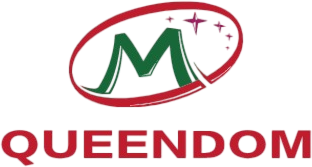Plant special light, also known as horticultural lighting, has become increasingly important in the modern agricultural industry. This type of lighting is specifically designed to provide the optimal conditions for plant growth, ensuring that crops yield higher quality and higher quantities. With the advancement of technology and the increasing demand for sustainable agricultural practices, plant special light has emerged as a key component in the modern agricultural ecosystem. In this article, we will explore the significance of plant special light, its various types, and the benefits it offers to the agricultural industry.
Introduction to Plant Special Light
Plant special light refers to a range of lighting solutions that are tailored to the specific needs of plants. Unlike traditional lighting systems, which are designed to provide general illumination, plant special light focuses on replicating the natural sunlight that plants require for photosynthesis. By providing the right wavelengths and intensity of light, these lighting systems can enhance plant growth, increase crop yields, and improve the overall quality of produce.
Types of Plant Special Light
There are several types of plant special light available in the market, each designed to cater to different plant species and growth stages. Here are some of the most commonly used types:
1. Fluorescent Lighting: Fluorescent lighting is a popular choice for indoor gardening and hydroponic systems. It emits a broad spectrum of light, including the blue and red wavelengths that are essential for plant growth.
2. High-Intensity Discharge (HID) Lighting: HID lighting, such as metal halide (MH) and high-pressure sodium (HPS) lamps, is known for its intense light output. These lights are often used in large-scale commercial greenhouses and are particularly effective for flowering and fruiting stages of plant growth.
3. LED Lighting: LED lighting is a relatively new entrant in the plant special light market. It offers several advantages over traditional lighting sources, such as lower energy consumption, longer lifespan, and a smaller heat output. LED lights are also available in a wide range of colors, making them suitable for various plant species and growth stages.
4. T5 Fluorescent Lighting: T5 fluorescent lighting is a type of fluorescent tube that is widely used in indoor gardening and hydroponic systems. It provides a balanced spectrum of light and is known for its energy efficiency.
Benefits of Plant Special Light
The use of plant special light offers numerous benefits to the agricultural industry, including:
1. Improved Plant Growth: By providing the optimal light spectrum and intensity, plant special light can accelerate plant growth and development. This results in healthier, more robust plants that are better equipped to withstand environmental stressors.
2. Increased Crop Yields: Studies have shown that the use of plant special light can lead to higher crop yields, as plants are able to photosynthesize more efficiently. This can translate into significant economic benefits for farmers and greenhouse operators.
3. Enhanced Produce Quality: Plant special light can improve the quality of produce by promoting more uniform growth and development. This can lead to better flavor, texture, and appearance, making the produce more appealing to consumers.
4. Energy Efficiency: LED lighting, in particular, offers significant energy savings compared to traditional lighting sources. This can reduce operational costs and contribute to a more sustainable agricultural industry.
5. Flexibility: Plant special light systems can be easily adjusted to meet the changing needs of plants throughout their growth cycle. This allows farmers and greenhouse operators to optimize plant growth and maximize yields.
Challenges and Future Developments
Despite the numerous benefits of plant special light, there are still challenges to be addressed. For instance, the initial cost of setting up a plant special light system can be high, particularly for small-scale farmers and gardeners. Additionally, the proper maintenance and operation of these systems require specialized knowledge and skills.
Looking ahead, there are several areas where future developments in plant special light could have a significant impact on the agricultural industry. These include:
1. Cost Reduction: As technology continues to advance, the cost of plant special light systems is expected to decrease, making them more accessible to a wider range of users.
2. Energy Efficiency: Ongoing research and development in LED lighting technology will likely lead to even more energy-efficient plant special light solutions, further reducing operational costs and environmental impact.
3. Smart Lighting Systems: The integration of IoT (Internet of Things) technology with plant special light systems can enable more precise control over light intensity, spectrum, and duration, resulting in even better plant growth and yields.
4. Customized Lighting Solutions: As the demand for specialized plant growth solutions increases, manufacturers are likely to develop more customized lighting systems tailored to the unique needs of different plant species and growth stages.
In conclusion, plant special light has become an indispensable tool in the modern agricultural industry. By providing the optimal conditions for plant growth, these lighting systems offer numerous benefits, from improved crop yields to enhanced produce quality. As technology continues to evolve, plant special light is poised to play an even more significant role in shaping the future of agriculture.













Explore More from Queendom Lamp
Stay updated with the latest LED technology, lighting solutions, and industry insights.
Request a Quote About Queendom